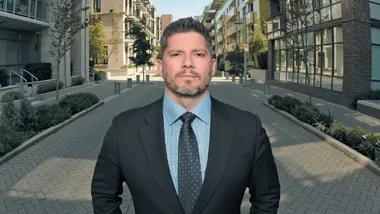A quick post to note that on Tuesday of last week, Vancouver City Council unanimously approved bylaws to put into place Vancouver's new "suites within suites" housing option, across the City. Also referred to as "lock-off suites", these secondary suites within apartments are meant to represent an opportunity for housing flexibility, with such suites usable as a rental mortgage helper (a “mortgage helper in the sky”, as one article puts it), a separated but related unit for an elderly parent or aging teenager, a unit for a care-giver, or any other relationship an apartment owner might need.
A quick post to note that on Tuesday of last week, Vancouver City Council unanimously approved bylaws to put into place Vancouver's new "suites within suites" housing option, across the City. Also referred to as "lock-off suites", these secondary suites within apartments are meant to represent an opportunity for housing flexibility, with such suites usable as a rental mortgage helper (a "mortgage helper in the sky", as one article puts it), a separated but related unit for an elderly parent or aging teenager, a unit for a care-giver, or any other relationship an apartment owner might need. It's a form of what we called "invisible density" during the EcoDensity exercise and although it may or may not result in actual population density (as it will be interesting to see how many people reside in a complete unit in different phases of use), it does provide more flexible housing options and more inherently affordable choices for both mortgage owners or renters. Here's the original report Council considered. And here's some associated media: 'We Need Rental, Today': Toderian and City gives greenlight to secondary suites.
Also this week, after two long nights of public hearing (at which over two-thirds of the speakers spoke in favour), Council unanimously approved bylaws allowing laneway housing in most residential zones across the City. Dubbed "hidden density" during EcoDensity, laneway housing has strong pent-up interest in many neighbourhoods, and we expect many applications in short order. This housing has also been called granny-suites, garden cottages, and coach-houses (I've also called them "Fonzie-suites", for those who remember the Happy Days sit-com - not just because it sounds cool, but because The Fonz was a renter, and its important to think of this housing type as more than just an opportunity for family members).
A key issue in Council's debate was a one vs. two parking space minimum for the lot as a whole (recognizing that on the lot there could be as many as three units - the principle house, a secondary suite within the principle house, and a laneway house). Council eventually voted to require just one space minimum, erring on the side of more space for a livable first floor to the unit, plus advantages for affordability and sustainability. Council also noted survey results that showed many people don't use their garages for parking, and most residents don't perceive it to be difficult to find on-street parking in single-family neighbourhoods. Lastly, it's anticipated that many residents in laneway housing won't own a car, although bike parking was discussed in depth.
The Laneway Housing staff report provides the details of the Vancouver approach to laneway housing, with key attributes that include rental only (no strata for sale), 1 or 1.5 stories but not 2 full stories, requirement to meet our green single family home building requirements (the highest in North America), and a direction to monitor and report to Council with observations after 100 units are applied for or 3 years, whichever comes first (or perhaps even sooner, if problems are identified). This is a monitoring requirement only, not an automatic "stop" to the program when these levels have been reached (thus we've had to clarify that it's not a "pilot" per se, but rather an approach to monitoring with the opportunity for change or adjust if deemed necessary by Council). In the approach we also strove to ensure that no incentive to demolish the primary house was created, and that the opportunity would be attractive to "ordinary lot-owners", not developers or builders/ speculators. Here's a link to a media article run the day of Council's consideration and a link to an article run the day after Council's approval.
This previous blog post provides a broader context to these two initiatives, and this post illustrates past steps and more detail on laneway housing.
As we monitor these two new housing types into the future, we'll continue to be interested in approaches that other cities take to similar housing. Please do let me know if your city is developing something similar, and if you are, perhaps we can help.

Analysis: Cybertruck Fatality Rate Far Exceeds That of Ford Pinto
The Tesla Cybertruck was recalled seven times last year.

National Parks Layoffs Will Cause Communities to Lose Billions
Thousands of essential park workers were laid off this week, just before the busy spring break season.

Retro-silient?: America’s First “Eco-burb,” The Woodlands Turns 50
A master-planned community north of Houston offers lessons on green infrastructure and resilient design, but falls short of its founder’s lofty affordability and walkability goals.

Test News Post 1
This is a summary

Analysis: Cybertruck Fatality Rate Far Exceeds That of Ford Pinto
The Tesla Cybertruck was recalled seven times last year.

Test News Headline 46
Test for the image on the front page.
Urban Design for Planners 1: Software Tools
This six-course series explores essential urban design concepts using open source software and equips planners with the tools they need to participate fully in the urban design process.
Planning for Universal Design
Learn the tools for implementing Universal Design in planning regulations.
EMC Planning Group, Inc.
Planetizen
Planetizen
Mpact (formerly Rail~Volution)
Great Falls Development Authority, Inc.
HUDs Office of Policy Development and Research
NYU Wagner Graduate School of Public Service


























